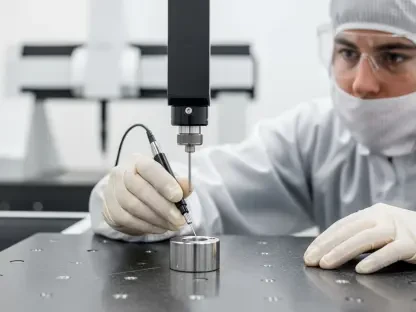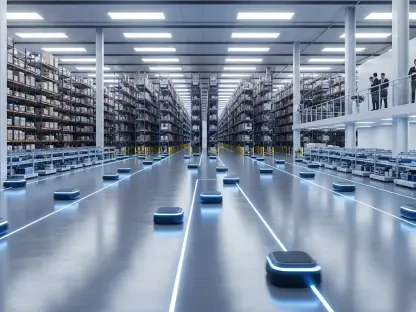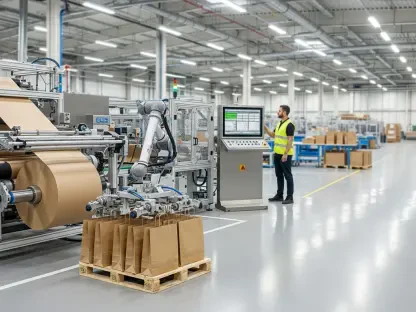In a transformative push for the European market, a leading global confectionery and food products company has unveiled a staggering €1 billion investment plan for its operations across the European Union by the end of 2026. This bold financial commitment signals an ambitious strategy to not only expand manufacturing capabilities but also to prioritize sustainability and innovation in a region critical to global trade. With a strong foothold already established through substantial investments over recent years, the company is poised to redefine industry standards by modernizing facilities, enhancing local production, and aligning with environmental goals. This move comes at a time when consumer expectations are rapidly evolving, and the need for responsible business practices has never been more pressing. The focus on the EU as a key export hub to over 100 markets worldwide further underscores the strategic importance of this initiative, setting the stage for a deeper exploration of its multifaceted impact.
Driving Growth Through Strategic Investments
Modernizing Manufacturing Capabilities
A significant portion of the €1 billion investment is directed toward upgrading manufacturing infrastructure to meet the dynamic demands of today’s consumers. Across 24 factories in 10 EU countries, which collectively employ 25,000 individuals, the company aims to boost production capacity and introduce state-of-the-art automation. A prime example is the €250 million allocated to a chocolate factory in Janaszówek, Poland, with plans to increase output by 63 percent through cutting-edge technology. This site, a cornerstone of regional operations, exemplifies how modernization efforts are tailored to enhance efficiency while maintaining high-quality standards. By focusing on locally produced goods—85 percent of products sold in the EU are made within the region—the company reinforces its commitment to reducing logistical footprints and ensuring fresher, faster delivery to markets. This approach not only strengthens supply chains but also positions the EU as a pivotal player in global exports.
Expanding Innovation for Consumer Needs
Beyond sheer production capacity, innovation remains at the heart of this investment strategy, with an emphasis on adapting to consumer preferences through inventive product formats and packaging solutions. Developments such as recyclable pouches for pet food brands and novel gum formats demonstrate a keen understanding of market trends toward sustainability and convenience. These advancements are not mere cosmetic changes but reflect a broader effort to align product offerings with environmental consciousness and modern lifestyles. The investment also supports research and development initiatives within the EU, fostering a culture of creativity that can respond swiftly to emerging demands. By integrating consumer feedback into the design process, the company ensures that its innovations resonate with end users, thereby building brand loyalty. This focus on tailored solutions highlights a proactive stance in a competitive industry where differentiation is key to sustained growth.
Commitment to Sustainability and Community Impact
Advancing Decarbonization Efforts
Sustainability forms a core pillar of the €1 billion plan, with ambitious goals to reduce environmental impact across operations. Remarkable progress has already been achieved globally, with greenhouse gas emissions cut by over 16 percent since earlier benchmarks, despite significant business expansion. In the EU, specific facilities have become trailblazers in this arena, such as the ice cream factory in Steinbourg, France, which now operates entirely on renewable electricity, marking it as a fossil-fuel-free site. Similarly, a pet nutrition plant in Lithuania utilizes renewable energy for its production lines. These milestones reflect a broader strategy to decarbonize the value chain, extending to agricultural initiatives like a substantial program aimed at reducing methane emissions in dairy farming across countries like the Netherlands. Such efforts illustrate a holistic approach to environmental stewardship that prioritizes long-term planetary health.
Strengthening Local Economies and Partnerships
Equally important to this investment is the emphasis on bolstering local economies through meaningful collaborations with farmers, suppliers, and technology providers. A notable €100 million commitment to modernize industrial sites in France exemplifies how financial resources are channeled to support employment and digital transformation while aligning with Net Zero objectives. These partnerships go beyond transactional relationships, fostering resilience and shared growth within communities. By investing in local talent and infrastructure, the company contributes to economic stability in the regions where it operates, creating a ripple effect of benefits. This strategy also ensures that supply chains remain robust and adaptable, capable of withstanding global disruptions. The long-term vision articulated by company leadership emphasizes not just profitability but a balanced approach that values community impact and sustainable progress, setting a benchmark for corporate responsibility.
Reflecting on a Visionary Approach
Looking back, the €1 billion investment in the EU by this global food giant marked a pivotal moment in balancing business expansion with societal good. It demonstrated how substantial financial commitments could drive tangible advancements in manufacturing, sustainability, and local economic growth. Moving forward, the focus should remain on scaling these initiatives, particularly by accelerating the adoption of renewable energy across more facilities and deepening agricultural sustainability programs. Stakeholders are encouraged to monitor how these efforts evolve, especially in terms of measurable environmental outcomes and community benefits. Exploring further collaborations with innovative startups and technology firms could also enhance the impact of such investments. This strategic blueprint not only solidified the company’s leadership in the region but also offered a model for other corporations to emulate, proving that growth and responsibility can indeed go hand in hand.









